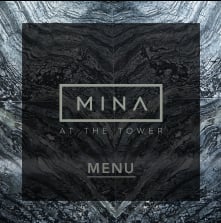
If you’ve ever found yourself looking around the room in confusion when an Xpert asks you to engage your core or lengthen your spine, you’re not alone. These are fitness cues, and you’ll hear them in everything from personal training to group classes. But what exactly do they mean?
We recently sat down with FLX Wellness Director AnneAlise Bonistalli for a lesson in cueing. Here’s AnneAlise’s dictionary of common terms so the next time you’re at FLX, you can work out with confidence:
[synonyms: activate your core; draw navel to spine; pull belly button to spine]
Brace the abdominal and lower back muscles to stabilize the spine and allow proper breathing (not to be confused with flexing or sucking in your stomach). This is the single most important thing you can do to prevent injury, improve balance, and avoid back pain.
[synonyms: don’t let ribs flare; ribs down]
This is another way to engage your core muscles to properly support your spine. “Flaring” is a common compensation when someone lacks the strength or range of motion to perform an exercise with proper form. Use your abdominal muscles to maintain a neutral spine.
[synonyms: elongate the spine; find length in your spine]
Of course, you can’t actually make your spine longer, but you can stretch the muscles and soft tissue surrounding the spine to aid with flexibility. Poor posture and daily activities that pull your shoulders forward (like sitting at a desk or hunching over your phone) can cause tightness and decrease flexibility, which is why this is so important.
[synonyms: pulse it out; pulse reps]
A pulse is a partial movement or a mini version of the full exercise. This technique is used to add additional stress to a muscle group. Pulsing an exercise after you’ve completed a full set is a great way to further work the muscles.
[synonyms: pinch shoulder blades together]
Don’t slump forward! As practice, pretend there’s a sheet of paper between your shoulder blades that you need to hold in place. This is especially important when performing exercises that target your shoulders, back, and lats, since you need to first ensure your shoulder blades are in the correct position before strengthening the muscles that surround them.
[synonyms: hips like headlights, square off]
Keep your hips straight ahead and even (like headlights on a car). This cue is used for hips and shoulders because the pelvis and shoulder girdles require stability for proper form and alignment. They need to both be facing the same direction and one should not be higher than the other.
[synonyms: gaze forward; gaze six-inches in front of your fingers]
This cue is applicable to the push-up and any other movement that involves the plank position. People tend to look upwards or drop their necks down to the ground when they should be gazing forward for a more neutral spine.






